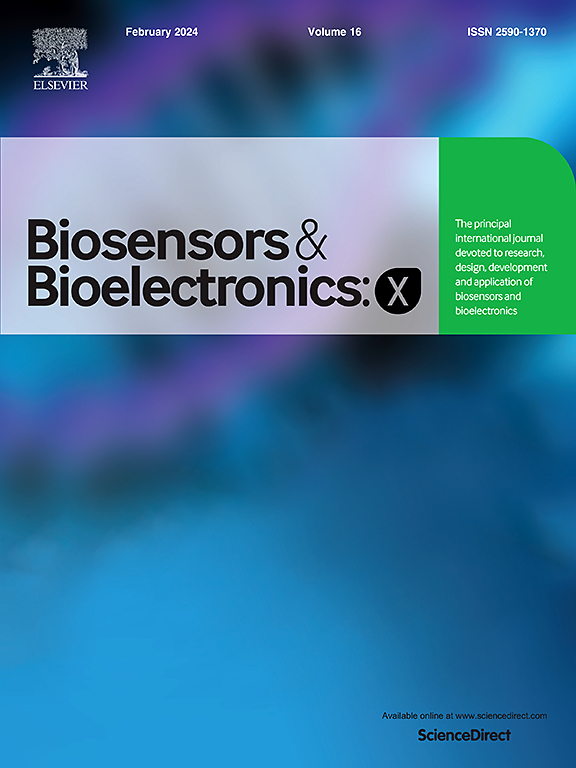A Biologically Inspired and Protein-Based Bio-Cyber Interface for the Internet of Bio-Nano Things
IF 10.61
Q3 Biochemistry, Genetics and Molecular Biology
引用次数: 0
Abstract
The Internet of Things (IoT) has changed the way how we interact with our physical environment, enabling connectivity and communication between physical and virtual entities, e.g., for digital twin applications. However, as we step beyond the IoT, developing the Internet of Bio-Nano Things (IoBNT), where biological and nanoscale entities will be included in our communication networks, includes challenges as well as opportunities. In the IoBNT, the role of Bio-Cyber Interfaces (BCIs) is still underscored, representing necessary building blocks that ensure the bidirectional information exchange between biological and digital communication systems. The application area of the IoBNT spans diverse domains, e.g., healthcare, personalized medicine, or environmental monitoring. This work proposes a theoretical framework for a BCI, leveraging advances in biotechnology, nanotechnology, and communication engineering to establish an interface for exchanging information between biological entities, nanoscale devices, and the digital world. Therefore, we discuss the key components of the proposed BCI framework. Furthermore, we survey the existing literature of biologically inspired BCIs and outline potential use cases and benefits of integrating BCIs in the IoBNT for various domains, such as healthcare and environmental monitoring.

生物纳米物联网的生物启发和基于蛋白质的生物网络接口
物联网(IoT)改变了我们与物理环境交互的方式,实现了物理实体和虚拟实体之间的连接和通信,例如数字孪生应用。然而,随着我们超越物联网,发展生物纳米物联网(IoBNT),其中生物和纳米级实体将包括在我们的通信网络中,包括挑战和机遇。在IoBNT中,生物网络接口(bci)的作用仍然得到强调,它代表了确保生物和数字通信系统之间双向信息交换的必要构建块。IoBNT的应用领域跨越多个领域,例如,医疗保健、个性化医疗或环境监测。这项工作提出了一个脑机接口的理论框架,利用生物技术、纳米技术和通信工程的进步,建立一个在生物实体、纳米级设备和数字世界之间交换信息的接口。因此,我们讨论了提议的脑机接口框架的关键组成部分。此外,我们调查了受生物学启发的脑机接口的现有文献,并概述了将脑机接口集成到IoBNT中用于医疗保健和环境监测等各个领域的潜在用例和好处。
本文章由计算机程序翻译,如有差异,请以英文原文为准。
求助全文
约1分钟内获得全文
求助全文
来源期刊

Biosensors and Bioelectronics: X
Biochemistry, Genetics and Molecular Biology-Biophysics
CiteScore
4.60
自引率
0.00%
发文量
166
审稿时长
54 days
期刊介绍:
Biosensors and Bioelectronics: X, an open-access companion journal of Biosensors and Bioelectronics, boasts a 2020 Impact Factor of 10.61 (Journal Citation Reports, Clarivate Analytics 2021). Offering authors the opportunity to share their innovative work freely and globally, Biosensors and Bioelectronics: X aims to be a timely and permanent source of information. The journal publishes original research papers, review articles, communications, editorial highlights, perspectives, opinions, and commentaries at the intersection of technological advancements and high-impact applications. Manuscripts submitted to Biosensors and Bioelectronics: X are assessed based on originality and innovation in technology development or applications, aligning with the journal's goal to cater to a broad audience interested in this dynamic field.
 求助内容:
求助内容: 应助结果提醒方式:
应助结果提醒方式:


